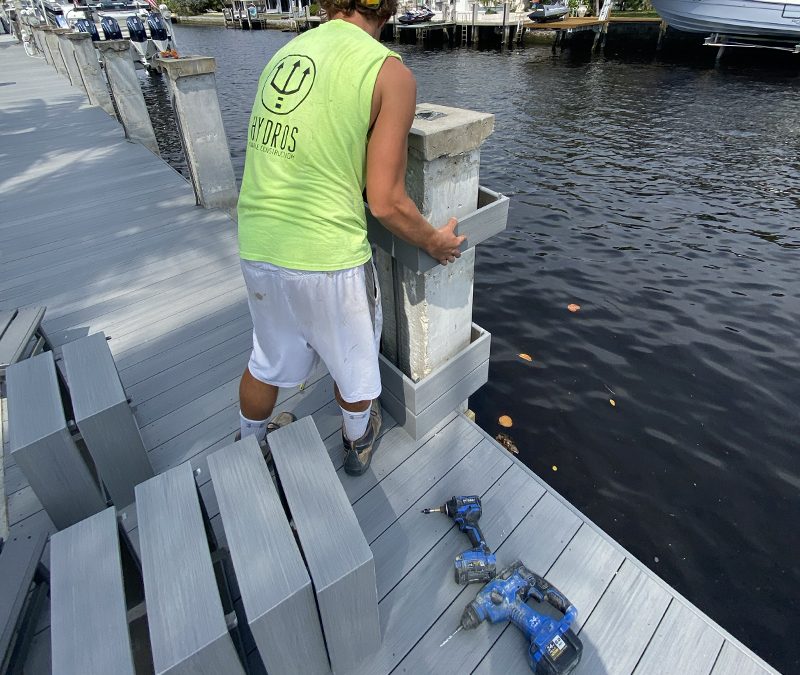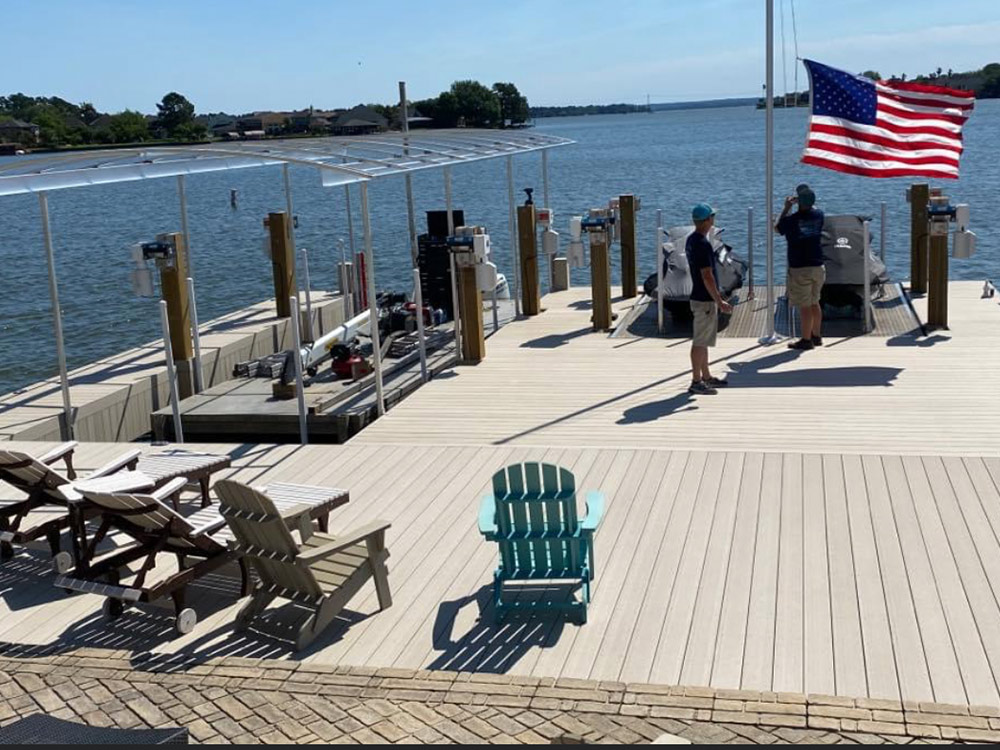Expert Insights on Resilient Dock Repairs Solutions
Expert Insights on Resilient Dock Repairs Solutions
Blog Article
Effective Dock Repair Techniques: Guaranteeing Structural Integrity
Guaranteeing the structural stability of docks through efficient repair work methods is extremely important for the long life and safety and security of marine centers. This involves a multi-faceted approach beginning with thorough examinations making use of innovative modern technologies like sonar devices and remotely operated vehicles (ROVs) to spot both visible and hid problems. Consequently, selecting the right fixing products, such as composite materials and corrosion-resistant alloys, is important for longevity. Architectural reinforcement approaches, consisting of the application of cross-bracing systems and load-distribution plates, play a vital role in mitigating tension points. Nonetheless, the relevance of these techniques comes to be obvious when checking out advanced repair service approaches and preventative upkeep techniques.
Analyzing Dock Damage
Evaluating dock damages is a vital very first step in making sure the architectural integrity and security of any kind of docking facility. This preliminary analysis involves a detailed inspection to determine both noticeable and surprise problems. Trick facets to analyze include the dock's structure, pilings, outdoor decking, and equipment. Each component should be inspected for indications of wear, rot, rust, or various other kinds of deterioration that might endanger the architectural integrity.
Architectural designers or certified assessors commonly execute these assessments making use of specialized devices and techniques. Underwater assessments may employ finder equipment or remotely operated vehicles (ROVs) to detect immersed damages. Above water, aesthetic examinations are enhanced by using dampness meters and various other diagnostic devices to discover underlying issues not instantly visible to the naked eye.

Picking Repair Service Products
Selecting the suitable repair service products is a pivotal step in the dock repair procedure, one that directly influences the long life and efficiency of the repaired structure. Material choice have to be driven by elements such as environmental problems, load-bearing needs, and compatibility with existing dock components. For example, wood is a typical choice for docks due to its natural resilience and aesthetic appeal. Nevertheless, choosing the ideal kind of wood, such as pressure-treated lumber or naturally rot-resistant species like cedar or teak, is vital to hold up against aquatic atmospheres.
Along with timber, composite materials are progressively prominent because of their durability and reduced upkeep demands. Composites, generally made from a blend of plastic and timber fibers, use exceptional resistance to rot, pests, and UV damages. For steel anchors, selecting corrosion-resistant alloys such as galvanized steel or marine-grade aluminum is necessary to protect against corrosion and make certain architectural honesty in saline water problems.
Epoxy materials and marine-grade sealers are vital for fixing cracks and securing joints, providing a water resistant obstacle and enhancing the dock's general toughness. By meticulously choosing high-quality materials, dock fixings can achieve resilient results, thereby securing versus future destruction and guaranteeing secure, reliable use.
Structural Support Methods
Reliable architectural support methods are essential in guaranteeing the stability and durability of dock repair services. This approach is specifically reliable for anchors revealed to hefty tons or severe environmental conditions.
Another important technique is the application of fiber-reinforced polymers (FRP) These products supply high strength-to-weight proportions and exceptional resistance to deterioration, making them suitable for strengthening concrete or wooden docks. FRP can be applied in strips or sheets and bound with epoxy resins to improve structural integrity.
Supporting and securing systems also play an important role in structural support. Cross-bracing, making use of steel or wood light beams, can combat lateral pressures, lowering persuading and movement. Anchoring systems, such as helical piers or driven heaps, offer a secure structure by transferring loads to much deeper, much more secure dirt layers.
Finally, the combination of load-distribution plates can help disperse weight a lot more uniformly across the dock's surface area, minimizing localized stress factors. These techniques collectively make certain that anchors stay robust and secure, efficient in enduring the rigors of their operational environment.
Advanced Repair Service Approaches

One more sophisticated method entails undersea welding, which permits fixings to be conducted without the need to dewater the area. This technique is especially helpful for attending to architectural concerns in immersed dock elements, guaranteeing very little disruption to operations. Enhanced welding techniques, coupled with robotic systems, supply precision and reliability, thereby expanding the life-span of the dock.
In addition, cathodic security systems are executed to avoid rust in metallic dock structures. By making use of sacrificial anodes or satisfied present systems, these methods effectively mitigate the electrochemical procedures that cause material deterioration.
Last but not least, progressed monitoring modern technologies, such as architectural health click for more info surveillance (SHM) systems, give real-time information see this page on the condition of dock frameworks. These systems allow positive maintenance and prompt interventions, inevitably making certain the lasting structural integrity of the dock.
Upkeep and Prevention
Upkeep and prevention are basic ideas that underpin the longevity and safety and security of dock frameworks. Regular assessments are extremely important, enabling early discovery of wear and tear, possible weaknesses, and ecological impacts. A positive approach, including routine look for corrosion, rot, and structural shifts, alleviates costly repair services and prolongs the dock's operational life.
Safety nets need to include applying safety finishes to steel elements to guard against corrosion and using treated timber to stand up to decay. Furthermore, making certain proper drain and ventilation can avoid water buildup, which is a typical root cause of architectural degradation. Integrating top quality materials and adhering to supplier standards during building and repair phases additionally play important duties in boosting sturdiness.

Educating workers in dock maintenance best practices ensures regular application of safety nets. Leveraging technical breakthroughs, such as drones for examinations and sensing units for real-time tracking, can even more enhance upkeep initiatives. By prioritizing upkeep and avoidance, dock owners can guarantee structural honesty, operational safety, and cost-effective management over the dock's lifespan.
Verdict
Finally, maintaining the architectural honesty of marine facilities necessitates thorough dock repair service techniques. Thorough examinations utilizing advanced devices uncover both noticeable and concealed damages, while the selection of ideal repair work products improves durability. Applying structural support methods addresses stress and anxiety points properly. Advanced repair you could try here work strategies, coupled with routine upkeep techniques, make sure the dock continues to be operational and risk-free under varied environmental conditions. Taking on these techniques dramatically prolongs the life expectancy and capability of marine facilities.
Ensuring the architectural stability of anchors through efficient repair methods is extremely important for the long life and security of aquatic facilities.Picking the ideal repair materials is a crucial action in the dock repair procedure, one that straight influences the long life and performance of the repaired structure.Effective structural support strategies are essential in guaranteeing the stability and durability of dock repair services. By prioritizing upkeep and prevention, dock proprietors can make sure architectural stability, operational security, and affordable monitoring over the dock's life-span.
In verdict, preserving the structural integrity of marine centers requires detailed dock repair work techniques.
Report this page